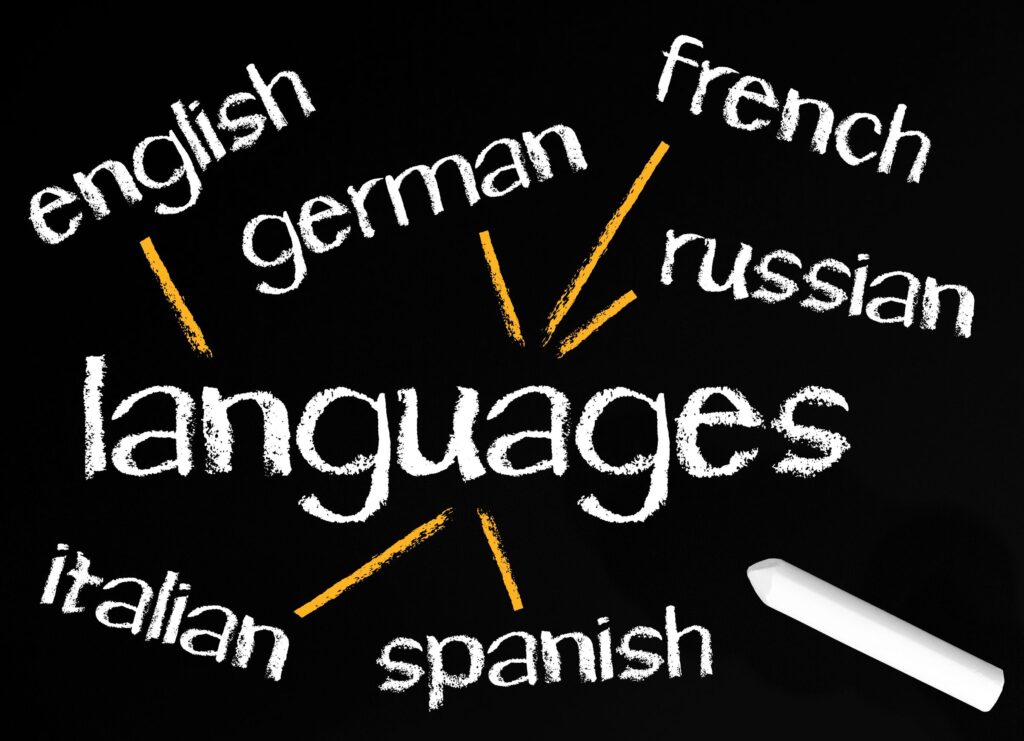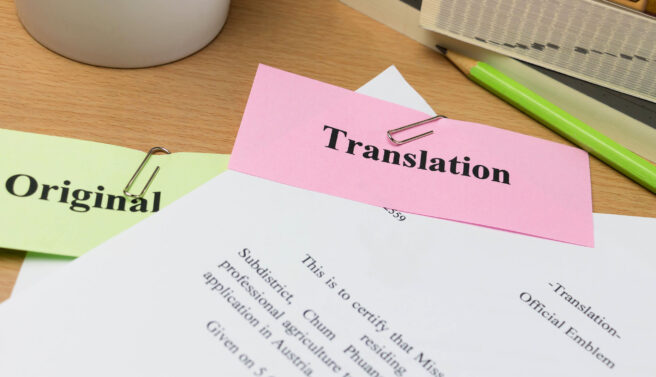American Sign Language (ASL) interpretation is one of the interpreting services some professional language service companies offer. ASL interpreters use hand and finger shapes, facial expressions, movements, and body language. These are the tools ASL interpreters use to transmit the information from program audio to viewers who are deaf or hard of hearing whose first language is sign language.
Sign language interpreting is the use of signs and gestures to convey the information in the program audio (speech and other important sounds) to viewers who are deaf and for whom sign language is their first language.
Uniqueness and diversity
Sign language is unique because it does not use spoken works for communication, but shapes and associated movements, facial expressions and body movements.
Sign language is diverse because the style differs among countries. Every country using sign language has its version. Even countries speaking the same language as English do not share a single sign language. For example, the primary language of England, the United States, New Zealand, and Australia is English. Yet, each has its unique sign language, although there are some similarities.
It is important to note, though, that even within a locale, there are some regional differences. Some shapes for two different words may be the same but differ in the position of the signer’s hands.
Is ASL here to stay or is it a dying language?
There are two sides to these questions. For some, ASL is here to stay. For others, it is dying as a means of communication. The reasons cited for the slow death of ASL are the availability of technological alternatives and the decrease in education funding.
- The deaf people think ASL will continue to be essential for them. But with the state budget cuts, many schools offering the ALS course are facing closure. Some deaf people who received high-tech cochlear implants think that ASL is no longer essential.
- Cochlear implant is not for everyone. There are several conditions to meet and there are devices to wear for life.
But it is difficult to give a definite conclusion. Here are some facts.
- Sign language is a threatened language because of some circumstances. In a conference of the WFD/EUD Conference in Ål, Norway (World Federation of the Deaf and European Union of the Deaf) in 2011, the participants from 21 countries stated that in the past, the promotion of sign languages is in the schools for the deaf. Today, the schools for the deaf are not anymore the centers for promotions because of technological developments.
- There will be changes in the use of sign language and Braille. There are signs that the demand for sign language interpreting is diminishing because of cochlear implants, digital audio, and voice-to-text technologies.
- There is continuing discussion about cochlear implants. Some say they can hear everything. But others say they can only hear environmental and background noises but not specific sounds.
- Captions and subtitles are not effective for deaf and hearing-impaired people who are slow readers.
- Most deaf people and the hard of hearing prefer using sign language, combining it with lip reading.
- American Sign Language is expanding offshore. Other countries are using it. Schools in West Africa use ASL. Countries using American Sign Language as a first language for the deaf include Barbados, Cambodia, Hong Kong, Chad, Bolivia, Brazil, Chad, Central African Republic, Singapore, the Philippines, Democratic Republic of Congo, Madagascar, Zimbabwe, Jamaica, Gabon, Kenya, and Thailand. Worldwide, many people learn ASL as a second language and the deaf communities around the world use it as their lingua franca.
- You cannot firmly say that American Sign Language is diminishing because it is gaining popularity in many people and industry sectors. Aside from the federal ruling of providing equal access to information to the deaf and the hard of hearing people, ASL firmly claimed its place as the primary means of reaching out to the deaf community particularly in this time of the coronavirus pandemic. With the urgency of the situation, every person should have the latest updates and information regarding Covid-19. The presence of ASL interpreters on every broadcast and TV program shows its importance.
Top 5 industries that use sign language
Many companies and organizations want to hire people who are bilingual or multilingual because of globalization and the opening of more economies worldwide. In the same vein, these companies provide employment opportunities to people with disabilities. You cannot argue that most people with disabilities have exceptional talents or skills that forward-thinking companies should not pass.
It is important to provide them with training and guidance in their language. This means that companies must have sign interpreters (as full-time employees or service providers).
A handful of industries need ASL because more deaf people are entering the labor market. These institutions make their workspace friendlier to the disabled. They hire interpreters or train them in ASL to give them more work opportunities and to meet the requirements of the people/customers they serve.
Hospitality industry
The employees in the hospitality industry engage with diverse clients every day. They need to be effective communicators as their clients always expect their services to be excellent. Disabilities should not hinder people’s chance to enjoy life experiences and pleasures, such as traveling.
Healthcare industry
The healthcare industry takes the top spot in requiring ASL interpreters. The people they serve come from different cultural backgrounds and speak various languages. You add being deaf or hearing impaired into the mix and the situation becomes more difficult. ASL interpreters are vital in giving them access to healthcare and ensuring that the healthcare providers give them the correct healthcare treatment they need.
Emergency services
ASL interpreters are crucial in emergencies when they need to properly communicate with people. Because of their disabilities and the situation they are in, they should have someone who can communicate with them directly and understand their predicament immediately, from getting their personal information to asking how they feel.
Retail industry
Customer-facing employees in retail stores deal with a wide range of customers every day. They build rapport with the customers, anticipate their needs, and answer their questions. They locate products for them. Retail employees cannot choose the people they will serve, thus it is vital to ensure you have ASL interpreters to cater to the needs of the hearing impaired.
Education industry
Many schools today accept students with special needs who do not want to be segregated from hearing students. Therefore, providing ASL training for their teachers will be an advantage in increasing enrolment and removing the communication barrier between the hearing and the hearing impaired.
We offer ASL interpreting services here at eTS
Get your message across all audiences. Our highly trained and certified ASL interpreters here at eTranslation Services are available to meet your requirements anywhere you are. Let us know what you need through email at contact@etranslationservices.com or call us at (800) 882-6058.
Image Copyright: David Fulmer from Pittsburgh, CC BY 2.0, via Wikimedia Commons



